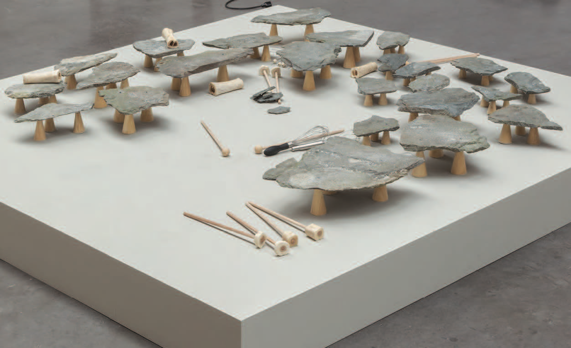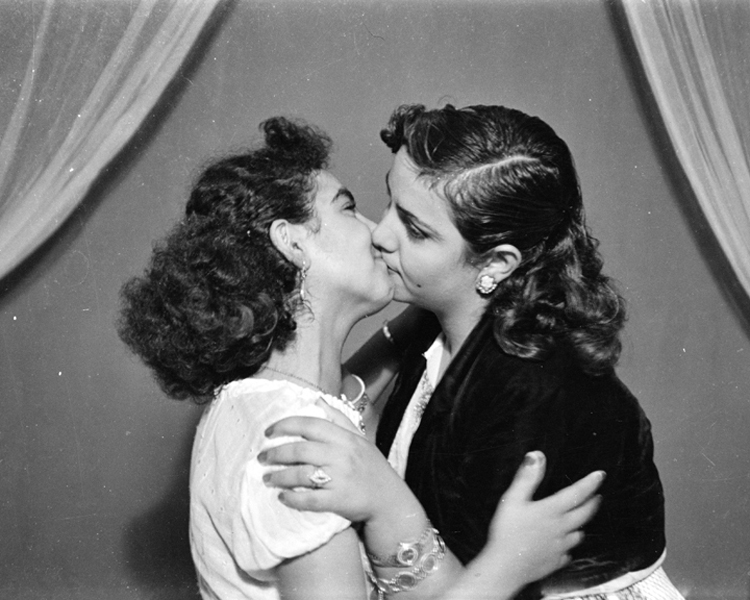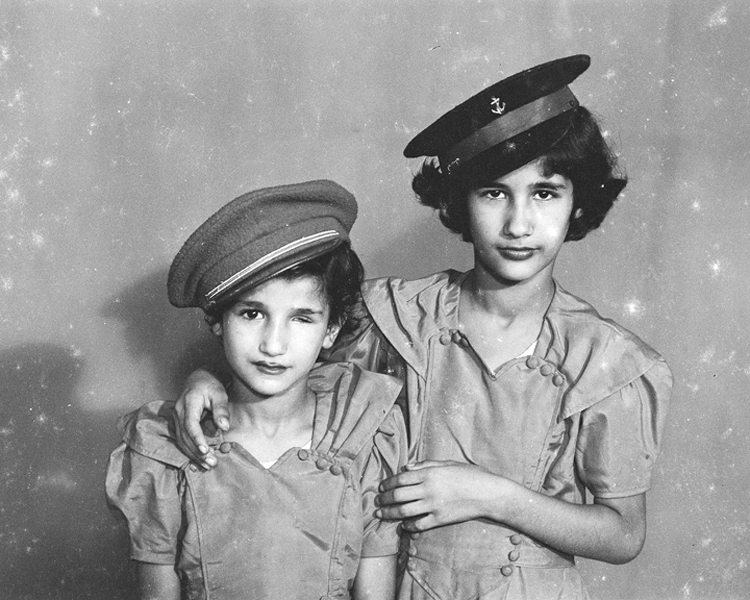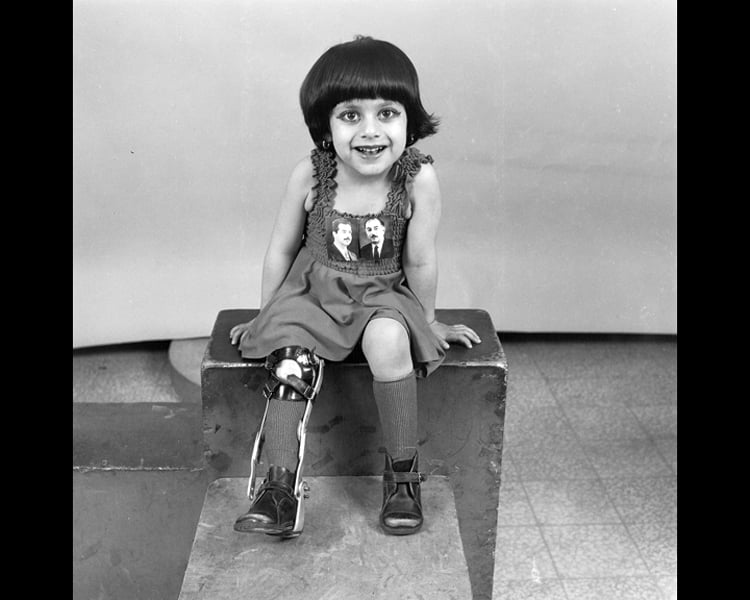
© » KADIST
Akram Zaatari
“Other photographers used to send me negatives of cross-eyed people, asking me to retouch them. I used to scratch out the emulsion where the pupil is, and draw another one right next to it.” Hashem El Madani. Hashem El Madani, a studio photographer in Saida, began working in 1948.

© » KADIST
Etel Adnan
Adnan’s paintings are simple images with bold contrasting colors and rich textures. This particular work has an iconic feel and a strong physical presence in spite of its diminutive size. All of her paintings are small but, like Howard Hodgkin’s work, their intensity gains from their diminutive size.

© » KADIST
Walid Raad
For his first NFT release artist Walid Raad made a series of animated birthday cakes, titled Festival of Gratitude , for some of the world’s most toxic and larger-than-life leaders. The series of looping three-dimensional animated videos are only seconds long—a timespan familiar to gif and online meme culture—and feature global dictators, strongmen and strongwomen, kings and queens, princes and princesses, emirs, sheikhs and sheikhas, sultans, shahs, emperors and empresses, popes, ayatollahs, presidents, prime ministers, CEOs, and GOATs. The subject of cakes has a specific personal meaning for Raad, whose first job as an adolescent was photographing pastries at a bakery in Beirut.

© » KADIST
Tarek Atoui
For The Reverse Sessions , the artist reversed the order in which instruments are usually created, taking the sounds of a collection of ethnic musical instruments from The Dahlem Museum as the starting point. The artist used the audio recordings of live performances that he wrote and directed, to collaborate with instrument makers on imagining and building the objects that could have generated these recordings. Without involving any images, Atoui proposed to engage with sound directly — contrary to the path of ethnomusicology that studies the shape and mechanism of an instrument with an emphasis on its cultural and social context.

© » KADIST
Akram Zaatari
“People often asked if they could pose with the Kodak advertisement where a full scale woman is featured with a camera offering Kodak rolls. They invented the poses, the gestures and situations.” Hashem El Madani. Hashem El Madani, a studio photographer in Saida, began working in 1948.

© » KADIST
Akram Zaatari
“People often asked if they could pose with the Kodak advertisement where a full scale woman is featured with a camera offering Kodak rolls. They invented the poses, the gestures and situations.” Hashem El Madani. Hashem El Madani, a studio photographer in Saida, began working in 1948.

© » KADIST
Akram Zaatari
“People often asked if they could pose with the Kodak advertisement where a full scale woman is featured with a camera offering Kodak rolls. They invented the poses, the gestures and situations.” Hashem El Madani. Hashem El Madani, a studio photographer in Saida, began working in 1948.

© » KADIST
Akram Zaatari
“While taking the picture it was challenging to make the boys sit properly without moving. Sometimes a member of the family whould hide behind, holding the child.” Hashem El Madani. Hashem El Madani, a studio photographer in Saida, began working in 1948.

© » KADIST
Akram Zaatari
“Films inspired people a lot. they came to perform kissing in front of a camera. In a conservative society such as Saida, people were willing to play the kiss between two people of the same sex, but very rarely between a man and a woman.

© » KADIST
Akram Zaatari
Hashem El Madani, a studio photographer in Saida, began working in 1948. Like all studio photographers his subjects came to him. The studio was a constant flux of visitors.

© » KADIST
Akram Zaatari
“These are negatives that were scratched because of a jealous husband from the Baqari family, who never let his wife out by herself. He was upset to know that she came to be photographed in my studio without telling him. He came asking for the negatives.

© » KADIST
Akram Zaatari
“When you position your hand on someone’s shoulder, your shoulders become straight and horizontal. Placing one’s hand on a stable surface helps position the shoulders and the general posture of the body.” Hashem El Madani. Hashem El Madani, a studio photographer in Saida, began working in 1948.

© » KADIST
Akram Zaatari
“The two men were relatives and both were in the Lebanese Army.” Hashem El Madani. Hashem El Madani, a studio photographer in Saida, began working in 1948. Like all studio photographers his subjects came to him.

© » KADIST
Walid Raad
Drawing & Print (Drawing & Print)
“The Lebanese wars of the past three decades affected Lebanon’s residents physically and psychologically: from the hundred thousand plus who were killed; to the two hundred thousand plus who were wounded; to the million plus who were displaced; to the even more who were psychologically traumatized. Needless to say, the wars also affected Lebanese cities, buildings and institutions. It is clear to me today that these wars also affected colours, lines, shapes and forms.

© » KADIST
Akram Zaatari
“In the 1980s I started using coloured paper backdrops, one of which was yellow. You can see they never reached the floor. I used them for colour and black-and-white photography.” Hashem El Madani.
Akram Zaatari
- location: Sayda, Al-Lubnan
- year born: 1966
- gender: male
- nationality: Lebanese
Walid Raad
Walid Raad is a Lebanese artist whose work investigates the way historical events of physical and psychological violence affect bodies, minds, culture, and memory...
Etel Adnan
Etel Adnan was born on February 24, 1925 in Beirut and died in Paris on November 14, 2021...
Tarek Atoui
Tarek Atoui is an artist and electroacoustic composer working with sound performance...
-
1950-1959
Akram Zaatari
1950“Other photographers used to send me negatives of cross-eyed people, asking me to retouch them...
Akram Zaatari
1950“While taking the picture it was challenging to make the boys sit properly without moving...
Akram Zaatari
1950“In the 1980s I started using coloured paper backdrops, one of which was yellow...
Akram Zaatari
1956“People often asked if they could pose with the Kodak advertisement where a full scale woman is featured with a camera offering Kodak rolls...
Akram Zaatari
1957“These are negatives that were scratched because of a jealous husband from the Baqari family, who never let his wife out by herself...
-
1960-1969
Akram Zaatari
1960“When you position your hand on someone’s shoulder, your shoulders become straight and horizontal...
Akram Zaatari
1966“People often asked if they could pose with the Kodak advertisement where a full scale woman is featured with a camera offering Kodak rolls...
-
1970-1979
Akram Zaatari
1970“People often asked if they could pose with the Kodak advertisement where a full scale woman is featured with a camera offering Kodak rolls...
Akram Zaatari
1972“The two men were relatives and both were in the Lebanese Army.” Hashem El Madani...
-
2000-2009
Walid Raad
Drawing & Print
2009(Drawing & Print) “The Lebanese wars of the past three decades affected Lebanon’s residents physically and psychologically: from the hundred thousand plus who were killed; to the two hundred thousand plus who were wounded; to the million plus who were displaced; to the even more who were psychologically traumatized...
-
2010-2019
Etel Adnan
2010Adnan’s paintings are simple images with bold contrasting colors and rich textures...
Tarek Atoui
2017For The Reverse Sessions , the artist reversed the order in which instruments are usually created, taking the sounds of a collection of ethnic musical instruments from The Dahlem Museum as the starting point...
-
2020-2029
Walid Raad
2022For his first NFT release artist Walid Raad made a series of animated birthday cakes, titled Festival of Gratitude , for some of the world’s most toxic and larger-than-life leaders...
